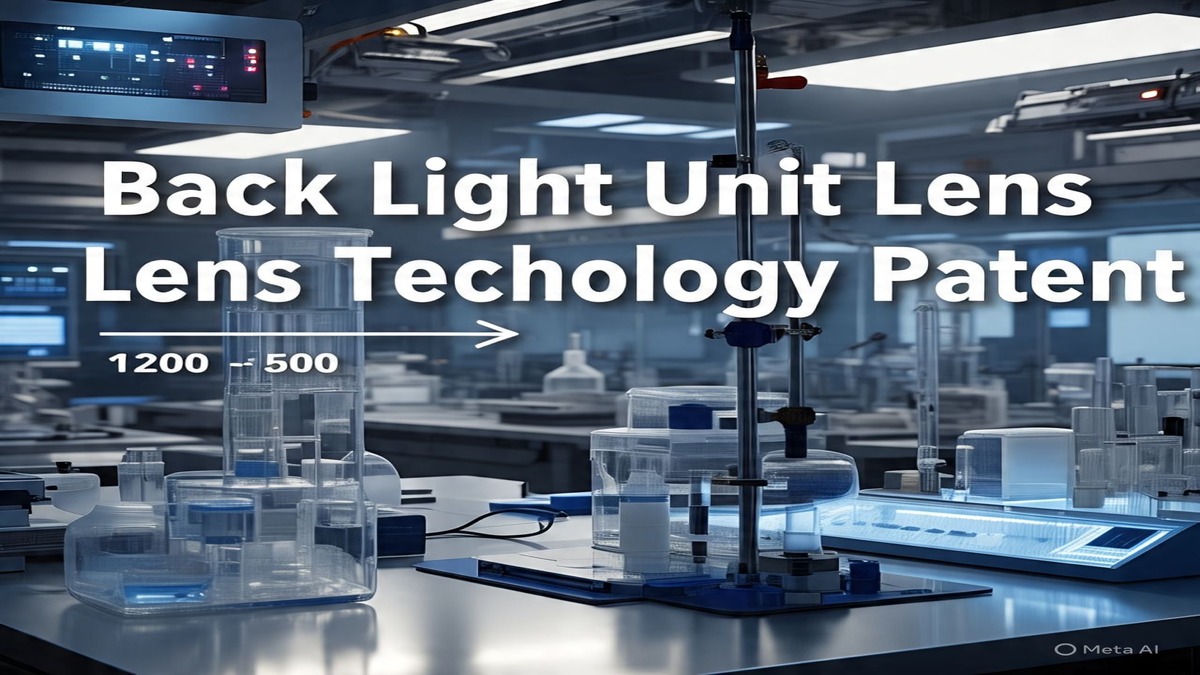In the world of display technology, innovation never stops. One of the most important developments in this area is the Back Light Unit (BLU) lens technology. A Back Light Unit lens technology patent refers to the legal protection granted to a specific invention or method related to enhancing backlighting in LCD (Liquid Crystal Display) panels. This patented technology is crucial for improving the brightness, contrast, energy efficiency, and viewing angles of screens in TVs, monitors, smartphones, tablets, and other devices.
What Is a Back Light Unit (BLU)?
The Back Light Unit is a key component of LCD screens. Since LCDs do not emit light by themselves, the BLU provides the necessary illumination from behind the display. It usually consists of several parts, including:
- LED light sources
- Light guide plate
- Diffuser sheets
- Prism sheets
- Reflector films
- Lens systems
Among these, lens systems are gaining prominence due to their ability to focus and direct light more efficiently.
How Does BLU Lens Technology Work?
BLU lens technology involves integrating micro-lenses into the light guide plate or placing lens arrays above the LED sources. These lenses modify the path of light so it spreads evenly across the screen while reducing energy loss. Advanced lens technology can concentrate light toward the viewer’s direction, making the display appear brighter without using more power.
Significance of the Patent
A patent on Back Light Unit lens technology protects specific innovations in lens structure, shape, material, or arrangement that optimize light diffusion and directionality. Such patents may cover:
- Micro-lens arrays embedded within the panel
- Nano-patterned surfaces for enhanced brightness
- Lens designs that reduce glare or hotspots
- Adaptive lens technologies for dynamic brightness control
These patents are vital for manufacturers to maintain competitive advantages and secure intellectual property rights for their innovations.
Industry Use Cases
- Smartphones and Tablets
Thinner lens configurations allow sleeker designs while maintaining display quality and battery life. - Televisions and Monitors
Patented lens technology improves brightness and color uniformity, especially in HDR displays. - Automotive Displays
Enhanced light direction helps maintain visibility under sunlight and from side viewing angles. - Wearable Devices
Energy-efficient lens systems allow longer battery life for smartwatches and fitness trackers.
Benefits of BLU Lens Technology
- Improved Visual Clarity: Directs light efficiently, reducing uneven brightness.
- Energy Efficiency: Less power is required to achieve high brightness.
- Thinner Displays: Eliminates the need for multiple layers, allowing slimmer device profiles.
- Better Viewing Angles: Even light distribution ensures consistent image quality from different angles.
FAQs: Back Light Unit Lens Technology Patent
Q1: What does a Back Light Unit lens technology patent cover?
A: It covers innovations in the design, material, or application of lenses that improve the performance of the BLU in LCD displays.
Q2: Why is this technology important?
A: It enhances screen brightness, energy efficiency, and uniformity—vital for better user experience in digital devices.
Q3: Which companies hold patents in BLU lens technology?
A: Major players like LG Display, Samsung, BOE, Sharp, and Sony have filed multiple patents related to BLU and lens technologies.
Q4: How does this technology impact device design?
A: It allows for slimmer and more efficient devices without compromising display performance.
Q5: Is this technology used in OLED or just LCD?
A: BLU lens technology is specific to LCDs, as OLEDs generate their own light and do not require a backlight.
Q6: Can lens patents be licensed?
A: Yes. Patent holders can license their technology to other manufacturers for a fee or strategic partnerships.
Q7: How does it compare to older backlight methods?
A: Lens-enhanced BLUs are more efficient, provide better light control, and improve the overall image quality compared to traditional diffusion-based systems.
Q8: Are there environmental benefits?
A: Yes. Lower energy use means reduced battery consumption and less environmental impact over time.
Q9: Can startups develop and patent their own BLU lens innovations?
A: Absolutely. As long as the innovation is unique and meets patent eligibility, startups can secure their inventions.
Q10: What future improvements are expected in this field?
A: Expect developments in nano-optics, AI-optimized lens arrays, and sustainable materials for even more efficient displays.
Conclusion
The Back Light Unit lens technology patent signifies more than just legal protection—it reflects the rapid progress in visual display technology. As screens become more advanced, efficient, and user-friendly, patented innovations like these will shape the future of our interaction with digital devices. Whether it’s for a smartphone, television, or in-vehicle display, lens technology is lighting the way forward.





